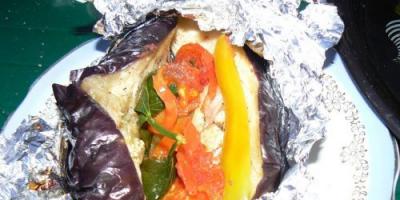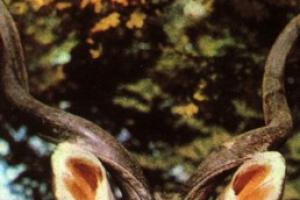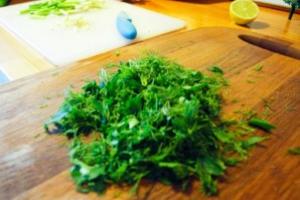
We have already written about how to properly cover trees in the fall to protect them from rodents and spring sun. But now spring has arrived, and many gardeners are wondering: when to open trees?
In this case, it all depends on the material with which the trees were covered. If the trees are covered with coniferous spruce branches or agrotex, then there is no need to rush here. After all, spruce branches are a breathable material, and you can safely leave them until the beginning of May.
The same applies to nonwoven materials. They are also highly breathable, so you can take your time removing them from the trees.
But if dense, airtight materials such as roofing felt or film were used to cover the trees, then the trees should be opened as early as possible to avoid the bark of the young tree becoming warm.
Why is this necessary? For example, roofing felt is strongly heated by the sun, which accelerates the growing season of the tree. At the same time, frosts at night can negatively affect the tissues of the tree bark.

But you shouldn’t delay with “breathable” covering materials either, since if you miss the formation of buds on the tree, you can subsequently damage them.
So, we conclude: if the trees were covered with “non-breathable”, that is, dense covering materials that do not allow air to pass through, the trees need to be opened in early April. If “breathable” covering materials, such as coniferous spruce branches or agrotex, were used as a covering material, then there is no need to rush to remove these materials. However, it is worth removing them before the buds open.
Healthy, blooming garden, which brings a rich harvest largely depends on proper, high-quality care, especially in spring period. The time for the awakening of all living things is important and troublesome for gardeners. Carry out all work depending on weather conditions and climate zone.
First work in the garden
Work in the garden begins with clearing the branches of the plantings from melted snow, if there was plenty of precipitation at the end of winter. The spring sun makes the snow loose and heavy and can easily break thin branches. To avoid this, shake it off. If the branches have already sagged and fallen, build supports to support them.
The following advice is relevant for areas with a slope. To prevent melt water from lingering and floods from eroding the soil, build snow banks across the slope.
Stock up on melt water - it is rich in useful microelements. To do this, containers need to be filled with snow and added as it melts.
With the arrival of spring, not only vegetation wakes up - rodents and pests are ready to become active. Inspect existing bait poisons and prepare new ones if necessary.
The snow has melted - start cleaning the garden. Collect old leaves and other debris, and get rid of weeds if they appear.
Whitewashing - protection of garden crops
How to whitewash trees
Even before the snow finally melts and the trees “wake up,” choose a dry day and whitewash.
Before work, prepare trees with damage: clean the trunk with a brush, remove dead bark, and at the same time, pests that have overwintered and remain in it will be destroyed. Growths and lichens are also cleaned off. Cover all opened cracks with garden varnish. Perform whitewashing after the treated areas have completely dried.
Early whitewashing has double benefits for wood:
- It will prevent burns that may appear on the bark from bright spring rays, so use only white color.
- Protects the tree trunk from insect pests.
Choose which solution to apply yourself. Acrylic paint is not afraid of rain - this whitewash is the most resistant. You can use special store-bought solutions or self-prepared ones, with the addition of any adhesive.
How to whiten fruit trees
The most common is lime whitening:
- 2.5 kg of lime is diluted per bucket of water;
- half a liter of copper sulfate;
- Add 200 grams of wood glue to make the solution last longer on the wood.
Whitewash based on manure and lime:
- 1 kg each of lime and manure;
- 200 grams of copper sulfate;
- Mix these components in 8 liters of water and leave for about 2 hours.
Clay-based whitewash solution:
- mix 1 kg of fatty clay in 10 liters of water;
- 2 kg of slaked lime;
- a shovel of cow dung;
- 250 grams of copper sulfate.
Leave for 2 hours. Whiten young trees with a mixture based on chalk; under this solution the bark will breathe freely.
Spraying trees and shrubs in the garden
Caring for your garden in the spring is a must for preventing the appearance of pests and combating diseases.
When to treat trees
Treat fruit and berry crops with special preparations at least 3 times:
- before the growing season (bud swelling);
- before flowering;
- 7-10 days after flowering.

How to spray fruit trees
Early spraying of trees Bordeaux mixture or copper sulfate, urea, (urea) will relieve plants from many problems. There are other means of treatment: chemical, combined, but the ones mentioned above are effective and one of the most budget-friendly. The gardener decides which product to choose.
- Start the first treatment when the temperature reaches 5 °C. During this period, spraying will destroy successfully overwintered pests.
- The use of special preparations before flowering will help protect the buds and cope with pest larvae and fungal diseases.
- The following treatment is needed to destroy emerging insects and fruit rot.
Remember that it is not recommended to spray trees during flowering.
Tree feeding
Garden care includes spring feeding trees, contributing to nutrition and improving soil quality. All necessary elements Plants rely on mineral fertilizers to grow, so don’t forget about them every year. Organic: compost, peat, manure is enough to use once every 2 - 3 years. Usually in the spring the soil is fed with nitrogen, and in the fall manure, phosphorus, and potassium are used.
Fertilizer application timing
Apply the first fertilizers in March. Mineral mixtures dissolve well and can be sprinkled on snow. Together with melt water they will be absorbed into the ground and useful material. On a site with a slope, such fertilizing will not be effective: it will be carried away by melt water.
Another option is relevant for all fruit and berry crops: apply 2/3 of the dose of nitrogen fertilizer when you dig up the trunk circles.
Dosage of organic and mineral fertilizers for the garden
Be attentive to the process of fertilizing: fruit-bearing trees will be negatively affected by both a lack and an excess of minerals. For example, the lack of normalization of such a useful element as nitrogen can affect frost resistance and overall plant growth.
More accurate fertilizer application data is shown in the table.
| Year of planting | Diameter of the trunk circle, m | Organic fertilizers, kg | Mineral fertilizers, g | ||
|---|---|---|---|---|---|
| Nitrogen | Phosphorus | Potassium | |||
| 2nd | 2,0 | 6 | 10 | 10 | 15 |
| 3, 4th | 2,5 | 10 | 20 | 20 | 30 |
| 5th, 6th | 3,0 | 15 | 30 | 30 | 45 |
| 7, 8th | 3,5 | 20 | 60 | 40 | 60 |
| 9, 10th | 4,0 | 25 | 75 | 50 | 75 |
| 11, 12th | 5,0 | 40 | 120 | 80 | 150 |
In addition to mineral fertilizers for feeding, use organic matter: manure and compost. Rotted manure improves soil properties. Those that are clayey in structure become less viscous, while those that are light and free-flowing increase their moisture capacity. Organic fertilizers not only have a positive effect on the soil, but also supply useful elements.
Valentina Kravchenko, expert

How to properly fertilize plants
Do not feed young plants; start this beneficial process from the second year of the trees’ life.
When applying fertilizers, consider the following factors:
- plants absorb liquid fertilizers better;
- do not apply fertilizer near the trunk: the roots, which absorb nutrients, are located along the perimeter of the branches;
- Apply fertilizer in the evening or on a cloudy day;
- To prevent the roots from getting burned, first moisten the soil, and only then apply liquid fertilizers;
- keep the soil near the tree in a loose state, so the plant “breathes” better;
- After applying dry fertilizers, water the area around the trunk along with top dressing.
Trimming - effective sanitary cleaning
Trees and shrubs that are not pruned during their growth look worse, age faster, and their productivity decreases.
When to prune fruit trees
Complete all pruning work before the buds begin to swell. Before performing the procedure, wait until the temperature drops to minus 5 °C, and night frosts to minus 10 °C have not returned.
During pruning, material is also collected for subsequent grafting of fruit trees. Selected shoots are cut, grafted immediately or stored in a dark, cool place until sap flows.
The Basics of Successful Garden Pruning
- Start pruning before sap flow begins;
- first of all, free the tree from shoots damaged during cold weather, this is an extra load that only hinders the development of the plant;
- remove dry and broken branches;
- cover the cuts with garden varnish if branches with a diameter of more than 15 cm were cut;
- Cultivate fruit-bearing plants first, and cultivate young plants 10-15 days later.

Care and planting of seedlings
Inspection and treatment of trees in spring
If the frosts have subsided, remove the insulation from the bollards. Inspect the trees to see if they are intact and whether rodents have reached them.
If there is an injury, treat the tree:
- Strip and treat bark damaged by mice iron sulfate(a 5% solution is used for this), then cover with garden varnish.
- The tree that the hares reach receives more serious damage. In this case, bridge vaccinations are used.

Planting seedlings in spring
Start planting in the garden in the spring as soon as the snow recedes, 2 weeks before the growing season. Until the trees “wake up”, planting will be more effective.
- Check the soil to make sure it is not frozen; seedlings will not survive in such soil.
- Dip the roots of the tree into the clay mash, this will increase the adhesion of the bottom of the tree to the ground.
- Prepare pits for new plants in the fall, and then you can fill them with fertilizers.
- If fertilizers were not applied before winter, then add rotted manure to the bottom of the hole where you are planting the tree. Apply a nitrogen-based fertilizer some time after planting.
Proper spring care will influence how trees and shrubs are prepared for the new season. A responsible approach to gardening will ensure high results - a well-groomed, beautiful, healthy, fruit-bearing garden.
If you dream of growing a large garden with fruit trees, our article will help you find answers to all your gardening questions. You will learn how to properly plant seedlings, care for them depending on the season, and prune fruit trees in the spring to preserve yields.
Planting garden fruit trees
Beginning gardeners often make a common mistake, namely, planting garden crops incorrectly.
Note: Digging a hole, inserting a seedling into it and covering it with soil is not all that is needed for rooting and growth. In order for the culture to take root, you need to choose the right place, prepare the site and transplant in accordance with all the rules.
Planting garden crops is best done in early spring when the soil warms up. In some cases it is also possible autumn planting, but in this case the seedling needs to be looked after more carefully so that it has time to take root and get stronger by winter.
Correct landing is carried out like this(picture 1):
- The seedling is inspected for damage and all dry or damaged roots are removed;
- The site has been prepared since the fall: deep digging is carried out, weeds are removed and organic fertilizers are applied (rotted manure is best);
- Make holes for planting. In areas with good drainage, you can simply dig a hole in the ground, but if the soil is too wet, it is better to plant in small mounds;
- When preparing the pit, the fertile soil is piled up separately. It is later used to fill the hole.
 Picture 1. Correct fit garden crops
Picture 1. Correct fit garden crops It is important to make the hole the right size. The straightened roots should fit freely in it. After placing the seedling in the hole, the roots are sprinkled with fertile soil, watered and the soil is compacted. When the water is absorbed, you can water again. In the future, the seedling must be monitored in order to timely apply fertilizers, water or spray the crop against diseases and pests.
From the video you will learn how to properly plant fruit trees.
Seedling care
In order for the garden to be productive and young plants to take root faster, they need to be constantly looked after.
Basic care of seedlings includes(Figure 2):
- Tree trunk care involves the gradual expansion of the treated soil around the trunk. Since the root system grows quickly, the space is increased every year, surface loosening is carried out in the spring and deep digging with a pitchfork is carried out in the fall. In summer, weeds are removed from the tree trunks, which can interfere with the development of the seedling.
- Watering plays important role in rooting seedlings. In a temperate climate, it is enough to water 2-3 times a week, but if a drought has set in and there is no natural precipitation, moisture is added daily (mainly in the evening).
- Fertilizer application This is especially important when planting on soils with low fertility. Nutrients entering the soil are absorbed by the roots, and the tree grows more actively and begins to bear fruit earlier.
 Figure 2. The main stages of caring for fruit crops: pruning, whitewashing trunks, watering and installing supports for branches
Figure 2. The main stages of caring for fruit crops: pruning, whitewashing trunks, watering and installing supports for branches Young seedlings are also necessarily inspected for symptoms of diseases and pest larvae. This will allow timely spraying to preserve the viability of the crop. Pruning is also carried out annually to form the crown and stimulate the formation of new shoots.
Features of caring for fruit trees are described in detail in the video.
Fruit trees for the garden: names and photos
Among the popular garden trees There are many types. Unfortunately, not all of them are suitable for growing in temperate climates. For example, citrus and subtropical fruits can only be grown in warm southern regions.
The most common types are considered to be: fruit trees and fruit bushes(Figure 3):
- Pomaceae (pears, apple trees, quince, serviceberry and rowan);
- Stone fruits (cherries, apricots, peaches, plums, etc.);
- Nut fruits (walnuts and hazelnuts, almonds);
- Berry (strawberries, wild strawberries, currants, gooseberries, raspberries, etc.).
 Figure 3. Popular types of garden crops: 1 - pomaceous, 2 - stone fruit, 3 - nut-bearing, 4 - berry
Figure 3. Popular types of garden crops: 1 - pomaceous, 2 - stone fruit, 3 - nut-bearing, 4 - berry You can also grow rosehip, sea buckthorn, mulberry, honeysuckle and hawthorn in gardens. The diversity of species is very large, and thanks to the work of breeders, it was possible to develop varieties that are resistant to temperature changes and diseases.
Varieties
One of the most important conditions successful cultivation horticultural crops is right choice varieties. All bred crops undergo many years of testing for compliance with the soil and climatic conditions of the region. Therefore, each climate zone has its own varieties.
Winter-hardy varieties are considered the best, since they take root well in any climate, and a decrease in temperature does not affect yields.
Among the best winter-hardy varieties allocate:
- Apple trees Antonovka, Grushovka Moskovskaya and Medunitsa;
- Pears Lada, Chizhovskaya and Cathedral;
- Plum Zanyatnaya, Hungarian Moscow and Blue Gift.
There are also winter-hardy varieties of cherries (Molodezhnaya, Pamyat Enakiev) and cherries (Bryanskaya pink, Tyutchevka, etc.).
Fertilizers for planting fruit trees
The acclimatization of seedlings also depends on the fertilizers that were applied during the planting process.
Note: When preparing a hole, the top (fertile) layer of soil is removed and not mixed with the rest of the soil removed from the hole. This soil is later used to fill the space inside the hole.
Traditionally, organic and mineral fertilizers. From organic fertilizers You can use rotted manure and compost. Fresh organic matter cannot be used, since the release of ammonia during the decomposition process can cause root rot.
When planting, you can use any mineral fertilizers except those containing nitrogen. Such fertilizing reduces the rate of plant establishment. Nitrogen-containing preparations are added later, when the seedling has acclimatized.
Caring for fruit trees in early spring
Basic garden care in spring includes pruning. First of all, shoots and branches damaged by frost are removed.
Preventive spraying is also carried out until the buds awaken. Most often, diesel fuel is used for this. It does not harm the seedling, covering it with an oily film that blocks the larvae’s access to oxygen.
Rules of care
The basic rules of care include whitewashing and pruning (Figure 4). After inspecting the trunks and branches, remove all damaged parts. It is also necessary to remove the covers and inspect the trunks for damage. If there are wounds on the trunk or branches, they are cleaned of bark residues, treated with copper sulfate and covered with garden varnish.
Whitewashing trunks performs several functions. Firstly, it destroys pest larvae that have overwintered under the bark. Secondly, it protects the bark from sunburn.
 Figure 4. Rules for garden care in spring
Figure 4. Rules for garden care in spring In addition, in the spring, complex mineral fertilizers are applied to the root circles, which will help the plants maintain productivity and obtain the necessary nutrients from the soil.
Peculiarities
Among the features spring care In the garden you can use preventive spraying against pests. They are carried out in several stages. The first time the treatment is carried out during the dormant period, when sap flow has not begun in the trunk and branches. The second time the treatment begins during the flowering period, using special chemicals. All these measures help protect crops from diseases and pests.
In the fall, they not only harvest, but also begin to prepare the garden for winter. Winter procedures should not be neglected, since their quality determines how successfully the crops will survive the cold season and retain their ability to bear fruit.
Rules of care
In autumn, garden crops require the following care (Figure 5):
- After harvest The tree trunk circles are completely cleared of leaves, fruit residues and dry branches. Any organic matter that sits on the surface of the soil will begin to rot and may cause a fungal infestation.
- Under the root apply potassium and phosphorus fertilizers. This will help the plants gain strength before winter. Nitrogen-containing fertilizers are not recommended, as they activate growth and prevent plants from entering a dormant state.
- After sap flow stops carry out pruning. But if the trees have not been damaged, this point can be missed, since not all crops normally tolerate the removal of branches immediately before the onset of cold weather.
 Figure 5. Autumn garden care and preparing plants for winter
Figure 5. Autumn garden care and preparing plants for winter It is also advisable to re-whiten the trunks with lime and spray the garden with insecticides.
Peculiarities
primary goal autumn care- prepare trees for winter. Having collected the entire harvest, be sure to clear the tree trunks of leaves and dry branches, loosen the soil and apply potash and phosphorus fertilizers.
Autumn pruning is carried out only when necessary (for example, if diseased or damaged branches are found) so as not to expose the plant to stress before winter. Mandatory care also includes whitewashing trunks and insulating young crops. They get wrapped up insulating material, and the tree trunk circles are covered with mulch. This will help protect the plants from frostbite.
Baits for rodents, which can damage the bark in winter, are also laid out throughout the area.
Pruning fruit trees in spring: diagram
Pruning in spring, carried out according to correct scheme, will help accelerate the growth of crops, maintain their productivity and help prevent the development of diseases.
Note: Pruning can be done in winter, but only in the absence of severe frosts. If the temperature drops below -8 degrees, branches cannot be removed, as the resulting wound can lead to the death of the entire plant.
There are several types of pruning that can be done in the spring.(Figure 6):
- Sanitary involves the removal of all damaged and diseased branches. This is exactly the procedure that is carried out in early spring, during the inspection of crops after winter.
- Rejuvenating helps preserve the productivity of old specimens. In this case, old branches that practically no longer bear fruit are removed. In their place, new ones with young productive shoots are formed.
- Pruning to form a crown more suitable for young seedlings whose branches grow chaotically. The main goal of the procedure is to form a crown correct form and free the central part of the trunk from unnecessary branches to activate fruiting.
 Figure 6. Types spring pruning
Figure 6. Types spring pruning
For pruning use only sharp gardening Tools: pruners and special hacksaws, with which you can make an accurate and even cut.
When to start pruning
Regardless of the climate zone, when to start pruning in the spring depends on temperature and weather conditions.
Note: The general rule is to remove branches when the tree is dormant. This way it will experience less stress, and the wound will heal faster.
As a rule, spring pruning begins in March. At this time, the movement of juice has not yet begun, but the buds are already ready to awaken, so the wounds will heal quickly and the plant will not experience severe stress.
Pruning rules
The main rule of spring pruning is to determine in time the moment when the tree is still dormant, but the buds are ready to open. This way you can do several things at once. important conditions: remove excess or damaged branches without stressing the crop, and speed up wound healing.
Among the basic rules are the following::
- For work, use only sharp garden tools (sectors and hacksaws) to ensure an even cut. The hacksaw you use for cutting should not be used for construction or other work.
- It is advisable to carry out pruning in warm, windless weather so that the cut site is not damaged. cold air and wind.
- After the procedure, the cut site is covered with garden varnish, and the trunk is whitened with lime.
By following these simple rules, you can easily maintain the vitality of trees, renew old plants and activate the growth of young ones.
Pruning fruit trees in winter
Contrary to popular belief, trees not only can, but also need to be pruned in winter. The only contraindication is severe frost. If the air temperature drops below -8 degrees, branches should never be removed. The resulting wound will take a very long time to heal, and the plant may die.
However, winter pruning has several important advantages. Firstly, the tree is at rest and is not under severe stress. Secondly, branches devoid of leaves are much easier to process and inspect, so the cut can be made more precise and even.
The cut site must be covered with garden varnish to protect healthy tissue from hypothermia or damage.
Pruning fruit trees in winter: video for beginners
Since winter pruning has some peculiarities, certain rules must be followed to carry it out.
If you have never removed branches in winter before, we recommend watching a video that will help you carry out the procedure correctly, while maintaining the productivity and viability of the crop.
Grafting and re-grafting is one of the main stages of caring for garden crops (Figure 7). Vaccination is a way vegetative propagation fruit crops. A seedling grown from seeds in most cases does not retain varietal characteristics, so it is grafted (a bud or cutting is transferred from another crop). After fusion, the gardener receives a full-fledged varietal tree.
 Figure 7. Features of vaccination and re-vaccination
Figure 7. Features of vaccination and re-vaccination Re-vaccination has much in common with vaccination, with the exception of one significant difference. A cutting with formed buds from another variety or even a plant is implanted into the trunk. As a result, the main tree will develop and bear fruit separately, and at the site of regrafting, a full-fledged shoot will grow, which will bear fruit of its own variety.
Note: With the help of regrafting, you can successfully grow crops that, due to climatic or soil conditions, cannot be cultivated traditionally.Spring apple tree care includes pruning and treatment for parasites
Spring work Apple tree care should not be delayed until warmer days arrive. Many procedures must be carried out before the snow melts.
Whitewashing and treatment of apple tree trunk in spring
Whitewashing tree trunks is necessary to protect the bark from sun rays. It is carried out from February to mid-March, until the snow melts. At a later date, painting the trunks will not bring any benefit to the tree, but will only decorate the garden.
Of the wide variety of whitewashes, I prefer garden acrylic paint. Its protective effect lasts for a long time - it does not collapse or crack, and also is not washed off by rain. I use it only for apple trees over 7 years old. To enhance the effect I add to the paint copper sulfate. This composition will not only protect the apple tree from sunburn, but will also help fight pests overwintering in the bark.
For young apple trees with immature bark, I prepare a whitewash mixture from lime, manure and clay in a ratio of 3:1:1. I mix all the ingredients well and dilute with water to the consistency of thick sour cream. The solution protects against burns and disinfects the bark, but needs to be renewed periodically.
After winter, apple tree trunks are often damaged by rodents. I cover small wounds with garden varnish immediately after the snow melts in March. In areas that have been chewed down to wood, I graft, trying to use as many cuttings of winter-hardy varieties as possible.
I remove the exfoliated bark during frost damage, and carefully cover the cuts with varnish. Over time, the wounds heal completely. In large areas of frost damage, I graft with a bridge.
Pruning apple trees in spring
The timing of spring pruning may vary depending on the availability of free time. You can start it at a temperature not lower than minus 10 degrees Celsius, and continue until the first buds appear on the branches.
I carry out sanitary pruning before sap flow begins. I cut out all the branches damaged in winter. For these purposes I use hand pruners and a sharpened garden saw.
In spring, I form the crown of young apple trees. I cut out shading and growing under small acute angle to the trunk of the branch. I leave a distance of 40-70 cm between the skeletal branches. Of the branches of the second order, I leave those growing to the sides, and cut out the rest.
Optimal height apple trees are the ones that are convenient to care for and harvest. I determine the required height as follows. I put a stepladder near the tree, stand on the top step and stretch my arm up. If the tree is taller than my hand, I lower the crown. To do this, I shorten the top of the conductor and the upper branches to the level I need. I treat the cuts with garden varnish.
Prevention of apple trees from diseases and pests in spring
Many pests and diseases easily survive the winter and begin to actively develop with the arrival of spring.
To combat crawling pests, in particular the flower beetle weevil, I successfully use catching belts. I install them with the appearance of the first thawed patches in tree trunk circle so that they fit as tightly as possible to the trunk.
I do the second treatment after the apple trees bloom, when the first ovary appears. During this period I use more gentle drugs - Fitoverm, Akarin, Lepidocid. I spray in dry, windless weather in the morning. The first results of the drugs can be seen 5-6 hours after treatment.
Apple tree grafting in spring
Best time for apple tree grafting - May, when active sap flow begins. I use cuttings of promising varieties harvested in winter. The survival rate of such graftings is very high - up to 90% of cuttings.
Fertilizing apple trees in spring
If a sufficient amount of fertilizer was added to the fertile soil when planting the apple tree, there is no need to additionally feed the tree for five years. An exception to this rule is growing apple trees on poor soils - sandstones and drained swamps.
I feed trees older than five years at the beginning of April. I use urea, rotted manure, wood ash. In the soil at the crown projection area, I make 20-25 cm indentations with a pitchfork or a crowbar. I pour a handful of fertilizer into each hole and cover it with soil on top. For one tree I use about half a kilo of urea or 5-6 buckets of manure, so that the feeding is enough for two to three years.
I never scatter fertilizers on the surface of the soil. They will not bring any benefit to the apple tree, but the grass will grow by leaps and bounds. Also, do not spread manure on top of the snow. Such actions will only slow down the snowmelt, and the weeds will get food.
Additionally, during the growing season, I apply fertilizer only when the tree signals a lack of nutrients. The first signs of trouble are visible before flowering begins - during this period I fertilize. I prepare a solution in a hundred-liter barrel of water, to which I add a bucket of mullein, a kilogram of superphosphate, and 300 g of potassium sulfate. The solution is infused for a week. I water the apple trees with this mixture, 4-5 buckets per tree.
I re-fertilize after flowering. I change the composition of the solution - I don’t add manure, but I double the amount of superphosphate and potassium sulfate. These components have a beneficial effect on the formation of the ovary and future harvest apple trees
Watering apple trees in spring
Before the leaves bloom, the need for watering of apple trees is compensated by the moisture accumulated in the ground after the snow melts. Next, the trees need to be watered, especially if the weather is dry and warm. I water young trees every five days, older trees less often, but more abundantly.
After watering, harrow the soil under the apple tree so that a crust does not form. I mulch the tree trunk area with a thin layer of straw or peat to retain moisture longer. Sawdust is not suitable as mulch - it will make the soil acidic. A thick mulch layer is also unsafe - rodents, pathogenic bacteria grow in it, and fungal pores multiply.
Protecting the apple tree from return frosts
Spring frosts will not harm apple trees if their buds have not yet blossomed. To protect deciduous trees from frost, I use sprinkling. To do this, in the late evening I generously irrigate the entire crown with water from a hose through a fine sprayer. Drops freezing at night give off their heat to young leaves. This method can only be used in calm weather, otherwise the effect will be exactly the opposite.
When there is a threat of frost during flowering, to protect the apple trees, I resort to the old proven method - smoke. In the garden I lay out heaps of straw, peat, leaves, and dry grass. I drive a stake into the center and pour a little earth on top of the pile. In the evening I pull out the stake - the hole will serve as a chimney, and set fire to the pile.
Transplanting an apple tree in spring
Before the leaves bloom, apple trees can be replanted if the planting site was initially chosen poorly. It is not difficult to dig up young trees (up to three years old) and plant them in a new location. It is necessary to water the soil well in the tree trunk area before digging up the tree, and after planting, carry out short pruning of the branches. This way the apple tree will quickly recover after transplantation and begin to grow.
Things are more complicated with transplanting apple trees at the age of 4-5 years. You need to dig a groove along the perimeter of the crown and gradually deepen it to 50 cm. Any roots that come across are cut off. When the depth of the ditch is sufficient, the earthen ball is dug up and the central root rod is trimmed. Replant the tree with a lump of earth. After planting, it is watered and the branches are radically pruned, leaving only the central conductor and a few skeletal and secondary branches.
If for some reason the apple tree had to be uprooted, a new seedling can be planted in its place the same year - the diseases of the old tree will not be transmitted.
Selecting a seedling for planting
You can plant young apple tree seedlings in early spring, as soon as the ground allows you to stick a shovel into it. During this period, enough moisture is retained in the soil for the tree to take root.
Before purchasing, seedlings with bare roots should be carefully examined for rotting roots, signs of disease and pest activity, and damage to the bark and branches. If the planting of seedlings has to be postponed, their roots should be wrapped in a damp cloth and the trees should be stored in the basement in this form for no more than 3-4 days.
in spring Apple orchard needs to special attention. It is necessary not to miss time and carry out a number of activities on time - trim the crown, heal wounds, vaccinate, feed the trees. It is in the spring that disease and pest prevention is most effective. Having done everything correctly and on time, you will definitely receive good harvest bulk apples.
Our grandmothers, growing garden strawberries, or strawberries, as we used to call them, did not particularly worry about mulching. But today this agricultural technique has become fundamental in achieving high quality berries and reducing crop losses. Some might say it's a hassle. But practice shows that labor costs in this case pay off handsomely. In this article we invite you to get acquainted with the nine the best materials for mulching garden strawberries.
Succulents are very diverse. Despite the fact that “little ones” have always been considered more fashionable, the range of succulents with which you can decorate modern interior, it’s worth taking a closer look. After all, colors, sizes, patterns, degree of prickliness, impact on the interior are just a few of the parameters by which you can choose them. In this article we will tell you about the five most fashionable succulents that amazingly transform modern interiors.
The Egyptians used mint as early as 1.5 thousand years BC. It has a strong aroma due to the high content of various essential oils, which are highly volatile. Today, mint is used in medicine, perfumery, cosmetology, winemaking, cooking, ornamental gardening, and the confectionery industry. In this article we will look at the most interesting varieties of mint, and also talk about the features of growing this plant in open ground.
People began growing crocuses 500 years before our era. Although the presence of these flowers in the garden is fleeting, we always look forward to the return of the harbingers of spring next year. Crocuses are one of the earliest primroses, whose flowering begins as soon as the snow melts. However, flowering times may vary depending on the species and varieties. This article is dedicated to the earliest varieties of crocuses, which bloom in late March and early April.
Cabbage soup made from early young cabbage in beef broth is hearty, aromatic and easy to prepare. In this recipe you will learn how to cook delicious beef broth and cook light cabbage soup with this broth. Early cabbage It cooks quickly, so it is placed in the pan at the same time as other vegetables, unlike autumn cabbage, which takes a little longer to cook. Ready cabbage soup can be stored in the refrigerator for several days. Real cabbage soup turns out tastier than freshly prepared cabbage soup.
Looking at the variety of tomato varieties, it’s hard not to get confused - the choice is very wide today. Even experienced gardeners He's annoying sometimes! However, understanding the basics of selecting varieties “for yourself” is not so difficult. The main thing is to delve into the peculiarities of the culture and start experimenting. One of the easiest groups of tomatoes to grow are varieties and hybrids with limited growth. They have always been valued by those gardeners who do not have much energy and time to care for their beds.
Once very popular under the name of indoor nettle, and then forgotten by everyone, coleus today is one of the brightest garden and indoor plants. It is not for nothing that they are considered stars of the first magnitude for those who are primarily looking for non-standard colors. Easy to grow, but not so undemanding as to suit everyone, coleus require constant monitoring. But if you take care of them, bushes made of velvety unique leaves will easily outshine any competitor.
Salmon backbone baked in Provençal herbs provides tasty pieces of fish pulp for a light salad with fresh wild garlic leaves. The champignons are lightly fried in olive oil and then water it apple cider vinegar. These mushrooms are tastier than regular pickled ones, and they are better suited for baked fish. Wild garlic and fresh dill get along well in one salad, highlighting each other’s aroma. The garlicky pungency of wild garlic will permeate both the salmon flesh and mushroom pieces.
A coniferous tree or shrub on a site is always great, but a lot of conifers is even better. Emerald needles of various shades decorate the garden at any time of the year, and phytoncides and essential oils, released by plants, not only aromatize, but also make the air cleaner. As a rule, most zoned adults coniferous plants, are considered very unpretentious trees and shrubs. But young seedlings are much more capricious and require proper care and attention.
Sakura is most often associated with Japan and its culture. Picnics in the canopy flowering trees have long become an integral attribute of welcoming spring in the Land of the Rising Sun. Financial and academic year here it starts on April 1, when the magnificent cherry blossoms bloom. Therefore, many significant moments in the life of the Japanese take place under the sign of their flowering. But sakura also grows well in cooler regions - certain species can be successfully grown even in Siberia.
I am very interested in analyzing how people's tastes and preferences for certain foods have changed over the centuries. What was once considered tasty and was an item of trade, lost its value over time and, conversely, new fruit crops conquered their markets. Quince has been cultivated for more than 4 thousand years! And even in the 1st century B.C. e. About 6 varieties of quince were known, and even then methods of its propagation and cultivation were described.
Delight your family and prepare themed cottage cheese cookies in the shape of Easter eggs! Your children will be happy to take part in the process - sift the flour, combine all the necessary ingredients, knead the dough and cut out intricate figures. Then they will watch with admiration as pieces of dough turn into real Easter eggs, and then with the same enthusiasm they will eat them with milk or tea. How to make such original cookies for Easter, read our step by step recipe!
Among tuberous crops, there are not so many decorative deciduous favorites. And caladium is a true star among the variegated inhabitants of interiors. Not everyone can decide to own a caladium. This plant is demanding, and first of all, it requires care. But still, rumors about the extraordinary capriciousness of caladiums are never justified. Attention and care can avoid any difficulties when growing caladiums. And the plant can almost always forgive small mistakes.
We have prepared a hearty, incredibly appetizing and simply easy-to-prepare dish for you today. This sauce is one hundred percent universal, as it goes with every side dish: vegetables, pasta, or anything. Chicken and mushroom gravy will save you in moments when you don’t have time or don’t want to think too much about what to cook. Take your favorite side dish (you can do this in advance so everything is hot), add some gravy and dinner is ready! A real lifesaver.
Among the many different varieties of these most popular vegetables, we will tell you about three that are distinguished by their excellent taste and relatively unpretentious conditions growing. Characteristics of the eggplant varieties “Almaz”, “Black Beauty” and “Valentina”. All eggplants have medium-density pulp. In Almaz it is greenish, while in the other two it is yellowish-white. What unites them good germination and excellent yield, but in different time. Everyone's skin color and shape are different.








